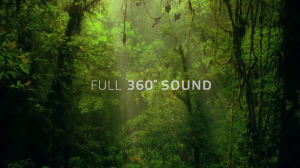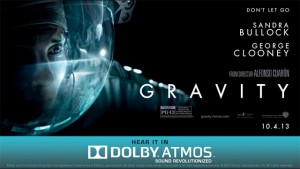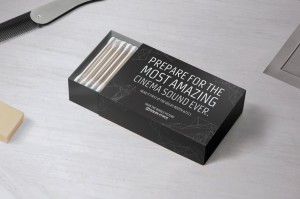Immersive sound and Object based mix
Object based mix
Object based mix : Since some events like Gravity, we know now what would means immersive.
Being shaked upside down in a spacesuit, with music,has been an experience for those who have seen it in an Atmos theater.
That wasn’t the first try for Atmos, the first projection took place in june 2012 for Brave (Disney), and more than 60 Hollywood blockbuster has been produced in Dolby Atmos format since January 2015, we can now say that this might be a reccurent way to build sound in blockbusters in USA and abroad.
Hear Dolby Atmos demo
But there’s two other format competing (in a way) to Atmos egemony:
DTS, and it’s “unbound” DTSX – which is more recent, promising to be more easely integrable in actual theaters configs, and freely avalaible to any content creators who want to use it.
Hear DTSX demo (not really convincing! I prefer the older one for DTS HD here)
AURO 3D, European format, created in 2005 by Galaxy Studio in Mol, Belgium and Barco Cinema. This format propose a 3 layers diffusion system, topped by a “Voice of God” speaker, for the sounds coming from above.(first film in this format: Red Tails 2012)
Auro 3D demo
Today those three formats are obviously going to become our standards, even if their implantation seems to imply more budget, which supposed to slow down their developments in some countries.
By the way, we might wonder what will become the sound libraries business according to these technological advances?
For this, we have to wonder what kind of elements are used in editing on that kind of movies.
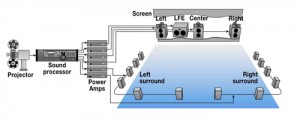
Sound editors were providing to rerecording mixers, big sessions with mono and stereo sources harmonously organized in the multichannel space, but their places in the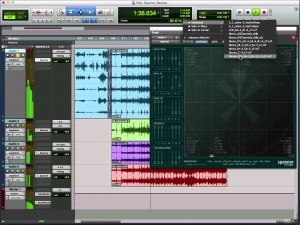
In 5.1, surrounds were determined by two groups of speakers on the left and right sides in the back of theater’s rooms.
It was better in 7.1, with a split of the two surrounds into four, wich means: Left surround rear, and Right surround rear channels.
The fact stays that, even these configurations wasn’t enough to be immersive enough for filmmakers.
2012, was a great year for immersive sound, Dolby invented the Object based Mix.
DTS-X is ruled by the same principles.
In an ʻObject-basedʼ system, the different sound elements are bundled with metadata to form audio objects. This metadata then describes how the sound element should be reproduced in the theater, by defining its position in the 3D-field with a vector, level, etc…10 The playback system then needs to render that information in real-time for each object related to the playback systemʼs speaker layout.
The great idea behind this concept, is to consider sound’s sources as movable objects in a widely covered listening space.

This differs from Auro3d concept.
It can be understood that the Object-based approach is especially powerful for the reproduction of discrete sound sources that require precise localization as well as movement. Examples are flying bullets, cars passing by, a knock on a door…
However, this only works best if these sources are recorded ʻdryʼ, without reverberation or reflections. In reality, however, such distinct, dry sources are the exception rather than the rule; they are almost always accompanied by ʻwetʼ or ambient sounds coming from the objectʼs surroundings. This kind of diffuse sounds is best handled by Channel-based systems.
While in a Channel-based system the precise localization and movement will indeed be limited to the capabilities of the standardized speaker system, Auro3D, propose 3 heights of alike 5.1 areas. The Heigh layer,for example, reproducing important reflections from above, greatly improving the localization of sounds in the lower Surround channels.
Sound libraries – one ingredient in the gasoline of sound engines
These two philosophies are interesting, because it involves two totally different raw elements.
Object based mix
It’s especially powerful for the reproduction of discrete sound sources that require precise localization, as well as movement, for example: flying bullets, cars passing by, a knock on a door…
That means that as audio elements, sound effects will be more useful as mono sources, with high definition details, maybe close to the way we conceive sound for video games engines. Indeed, these sonic objects might have starts, loops, and ends enabling sound editors to give latitude to sound mixers.
To date, there’s no sound libraries Atmos based,and,we are now turning towards some interesting ways to provide tools to this format, for example, including metadatas about object’s size, or creating groups of sounds to create objects….
Things are different for Auro3D, maybe because this technology assumed that sounds has to be layered in acoustic environments. This kind of diffuse sounds is best handled by Channel-based systems.
That’s why this format is often best-suited for integrating multichannel recordings, with constructed layers for the three differents eight’s.
Tonsturm, german hi quality recordings manufacturer, has already produced a sound library dedicated to Auro3D format.
In an excellent article, published by Barco, titled: Auro 11.1 versus Object based sound in 3D, Brian Claypool and Wilfried Van Baelen wrote:
“Object-based systems especially perform better with very slow moving objects. But those are first of all not common and secondly risk drawing attention away from the screen, which results in a less immersive cinema experience (…) One of the strengths of the Height layer in Auro 11.1 is that it reproduces important reflections from above, greatly improving the localization of sounds in the lower Surround channels, even without the use of Object-based technologies.”
These aspects may inspire us to create more other accurate libraries, taking advantages of this specificities.
We, sound libraries manufacturers, might consider that these different orientations, are additional opportunities for future libraries.
Let’s bet that future will bring to you the most amazing tools you’ll need for your brilliant projects!

